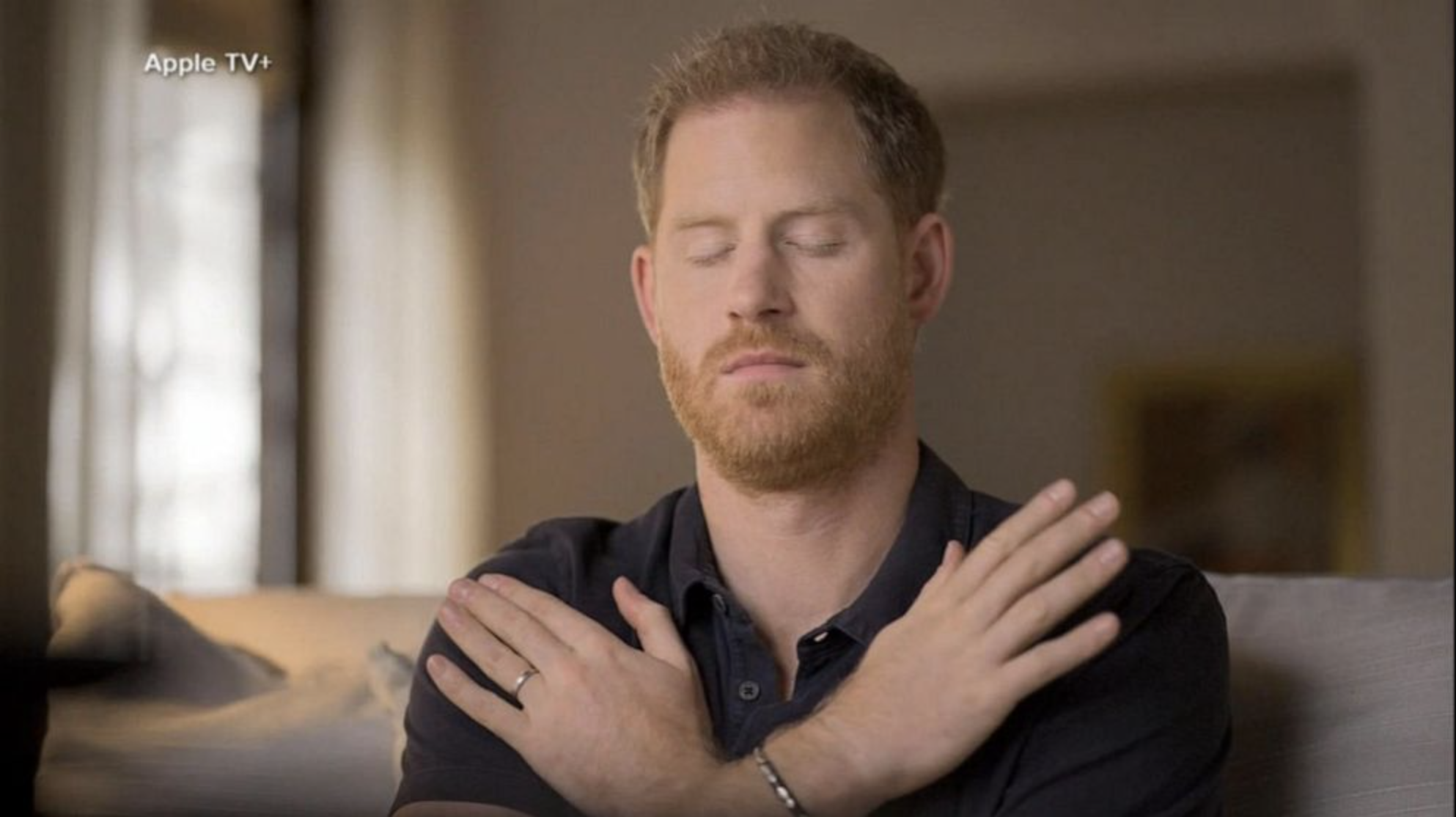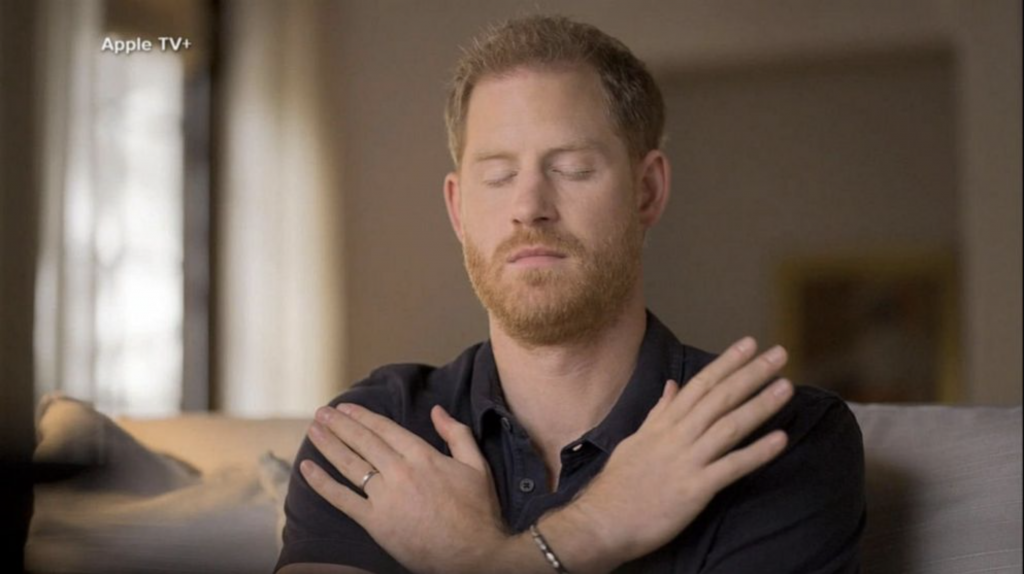
Apple TV+
- Prince Harry underwent a therapy session on camera in an episode of his mental health docuseries.
- In the episode, Harry gets EMDR therapy to work through his anxieties about flying to London.
- The treatment uses shoulder tapping and eye movement to help process traumatic memories.
- Visit Insider's homepage for more stories.
Prince Harry invited the public into a private therapy session in the fourth episode of "The Me You Can't See," the mental health docuseries he co-produced with Oprah Winfrey.
In the episode, the Duke of Sussex demonstrated a technique known as eye movement desensitization and reprocessing, or EMDR therapy.
The therapy was designed to help patients work through traumatic memories associated with post-traumatic stress disorder, but it's more recently been used to treat anxiety disorders as well, EMDR consultant and therapist Nidhi Tewari told Oprah Daily.
Harry works through his trauma surrounding his mother's death with EMDR
Before an EMDR treatment can begin, a therapist will first review the patient's history and identify any traumatic memories they need to work through.
Harry said he uses the treatment to address the "worried, concerned" feeling he always experiences when flying back to the UK.
"For me, London is a trigger, unfortunately, because of what happened to my mum [Princess Diana], and because of what I experienced, and what I saw," Harry said on the show.
In the session, his therapist tells him to cross his arms and tap his shoulders while recounting memories and how they made them feel. The shoulder tapping is meant to help the brain reprocess those difficult memories while focusing on an outside sensation.
"It's like, every time something comes up, whoosh, we're done with that," Harry said.
Tapping and eye movement can help the brain reprocess painful memories
Viewers can see Harry's closed eyes moving under his lids as he taps his shoulders. That's the "eye movement" component of EMDR. It's thought to be similar to the rapid eye movement stage of sleep, when your brain processes information from the day.
Some EMDR therapists will use other cues, like following a finger or sound, to direct those eye movements instead of tapping.
EMDR therapy is usually spread out across six to eight sessions, Tewari told Oprah Daily. That process typically includes some talk therapy to review new insights as well.
"With EMDR, we go back, we look at the past, we look at how your past may be affecting what's happening to you, currently," Wendy Byrd, EMDR practitioner and the president of EMDR International Association, told Good Morning America.
"It's changing the way the experience is stored, and when the brain changes the way it's stored, you feel differently about it," she said.

